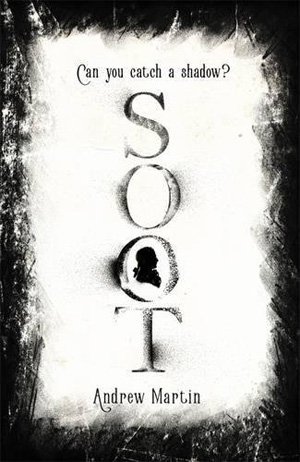 Written by Andrew Martin — Here’s an author who is no stranger at all to historical crime fiction. Back in 2011 he won the CWA’s Ellis Peters award for his book Somme Stations, set during World War I. With Soot he jumps back almost 120 years to a snowy Yorkshire in 1799, and delivers a story that feels rather Dickensian in more ways than one.
Written by Andrew Martin — Here’s an author who is no stranger at all to historical crime fiction. Back in 2011 he won the CWA’s Ellis Peters award for his book Somme Stations, set during World War I. With Soot he jumps back almost 120 years to a snowy Yorkshire in 1799, and delivers a story that feels rather Dickensian in more ways than one.
Fletcher Rigge was set to inherit an old estate in the county, complete with a country house, a village, open fields and peasants to work them. However, his old man had a habit for the tables, and lost the entire estate to a fellow named Corrigan whose intention is to modernise the farm, enclose the land and drive the people off. The older Mr Rigge has taken his own life while the younger, the hero of our story, languishes in York Castle – the debtors prison.
His opportunity to escape prison and debt comes in the form of Captain Harvey, a peculiar man who carries a pistol and walks with a cane. Harvey too is recently bereaved – his father was stabbed in the gullet with a pair of scissors. Matthew Harvey was a shade painter, who used soot to recreate the silhouettes of his sitters, producing works of all shapes and sizes. Some were small enough to fit in a locket, others large enough to hang on the wall.
No local constable or thief taker has been able to work out who killed the artist, so Captain Harvey has paid half of Fletcher Rigge’s debt, springing him from prison for a month. Why? Because Rigge is an educated fellow, with something to prove. If he can find out who did it, Harvey will pay off the rest of the debt freeing Rigge for good. The only clues are six silhouettes that Harvey painted on the day of his demise. They include a dandy with very little chin, another man with a huge and ugly nose, a woman in a riding hat, and a woman with two girls and a pug dog. It’s thought one of the six did the deed.
Something doesn’t seem right about Captain Harvey, with his mistress and his man servant, but then to Fletcher Rigge nothing seems right in the changing world of the late 18th century. He’s a child of the English Romanticism, and a bit like the some in the Brexit movement he harks back to an older version of England. For him it’s a time before the coal fumes of rising industry and the hedgerows of the enclosure movement. He’d rather be sitting by a haystack, writing poetry while happy ag labs sing folk songs in the fields. He has a deep sense of honour, which might be his undoing, but also a keen eye for detail and reads people well. If he solves the case he might have a chance with Lucy Spink, daughter of a rich man in the upholstery business.
Martin tells the story mainly through Rigge’s diary entries and documents collected together by a Mr Erskine, a local attorney. Erskine is following Rigge’s story with another agenda. Some gentlemen in the area feel that Rigge was hard done by, and that Corrigan might be a cheat at cards and dice. Rigge doesn’t know it, but via Erskine’s intervention he may not have to rely on Captain Harvey at all for his freedom.
The notes, letters, diary entries, transcriptions and so forth allow the author to play with various different voices. Thereby he changes the emotional tone throughout the story, sharing with us the strata of York society via a range of characters writing first person. Originally, the intention was to show the shade paintings as illustrations in the book alongside all the other documents, but they’ve been omitted from the final copy. That’s a shame.
There is a Dickensian feel to the language, and it’s a bit like reading Barnaby Rudge but lighter, with a bit more humour. Occasionally there are lapses in the language that seem to be for an American ear. I’m not sure Yorkshiremen would have used the word ‘varmint’ in 1799 (or yesterday, even) and at another point a character claims to have ‘called someone out’, which seems like very modern diction. Sometimes it lacks cohesion. In the beginning, the mystery of the shades is central but later that sub-plot takes over. There are one or two more bodies, some bizarre revelations about the sexual predilections of certain characters, and soon it’s hard to guess where the focus is.
And yet the language and the detail of 18th century life, along with Fletcher Rigge’s interesting outlook, will keep drawing you in. It is actually a delightful read with lots of texture to it, and a very clever ending. Put the book down for longer than five minutes and you’ll want to be reading it again, mainly for the way it’s written.
For another historical crime read set in the 1790s, try The Silent Boy. Or, for more crime fiction set in Yorkshire, click here.
Corsair
Print/Kindle/iBook
£7.99
CFL Rating: 4 Stars








